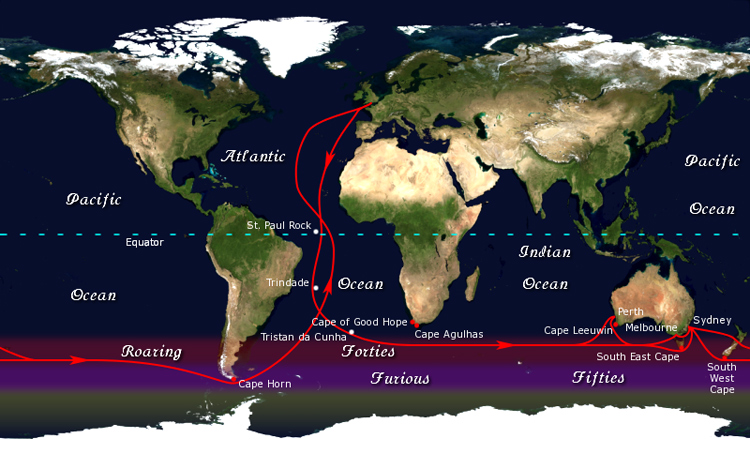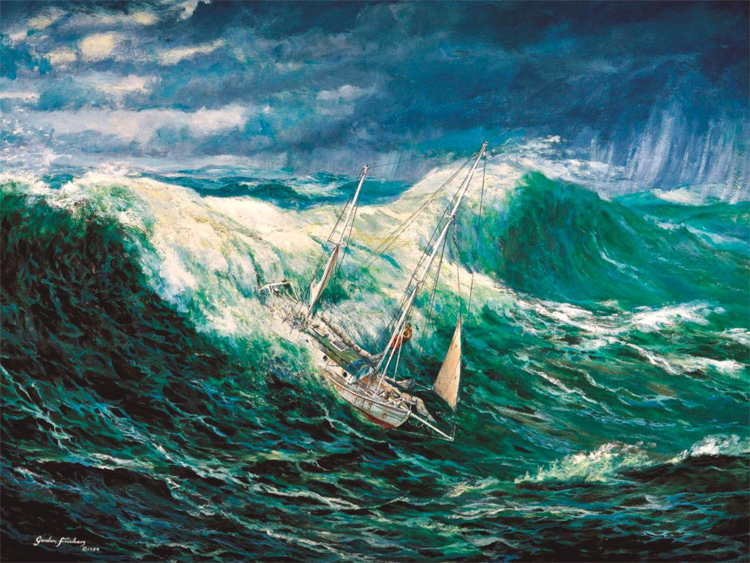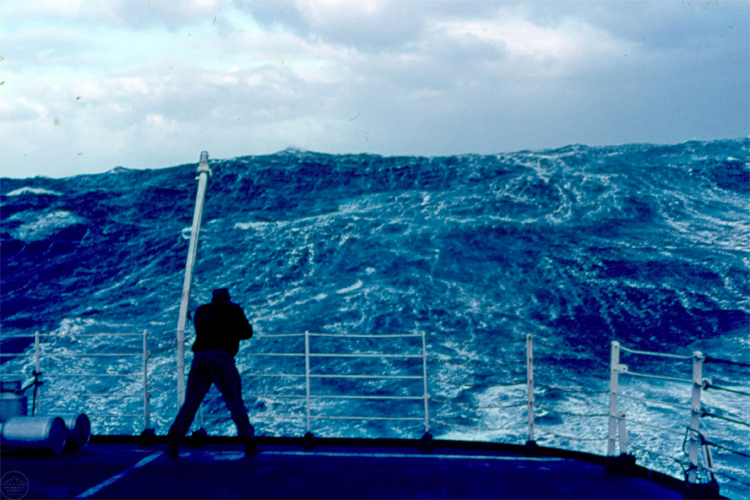The Roaring Forties are extremely powerful westerly winds that blow in the Southern Hemisphere between latitudes 40° and 50°.
These gale-force, west-to-east currents are the result of the combination of three variables: warm air movements, the Earth's rotation, and the near absence of relevant landmasses.
Warm air near the equator rises and tends to move toward the North and South Poles, where temperatures are much lower and less heated by the sun.
As it travels south of the equator - and is pushed by cooler winds - the wind starts accelerating because it does not encounter obstacles serving as windbreaks.
With the help of the rotation of the Earth, air deflects south and morphs into high winds that circle the South Pole.
They are only interrupted by Tasmania, Central and South New Zealand, and South America's Cape Horn.
Wellington, the capital of New Zealand, is also known as "Windy Welly" because it is one of the few cities located in these turbulent latitudes.
The Roaring Forties, however, are not linear.
In the southern summer, they shift toward the South Pole; during the southern winter, they move north toward the equator.
As a general rule of thumb, you could say that the further south you go, the stronger the winds.
In lower latitudes, there are also the Furious Fifties (between 50° and 60°) and Shrieking or Screaming Sixties (below 60°).

Sailing in the Roaring 40s
The Roaring Forties were named by the first sailors to have navigated these latitudes during the Age of Sail (1571-1862).
The powerful winds helped captains and ships sail faster from west to east, from Europe, and through the Brouwer Route, via Cape of Good Hope, across the Indian Ocean, and toward Australasia or the East Indies.
The fast passages were referred to and described as "to run the easting down."
On the return leg, ocean explorers would continue to take advantage of the Roaring Forties.
The sailors navigated eastward across the Pacific Ocean, south of Cape Horn, and then headed up the east coast of the Americas to the Old Continent.

Today, modern yachtsmen keep using the Roaring Forties to speed up their round-the-world voyages and record-breaking sailing challenges.
These strong prevailing winds blow continuously all year round, ranging from 15 to 35 knots, and produce open ocean waves of up to 33 feet (10 meters).
They are wilder in spring and autumn and can produce gusts of up to 125 miles per hour (200 kilometers per hour).
An old sailor's saying tells us, "Below 40 degrees south, there is no law; below 50 degrees, there is no God."
So, it's fair to say that this predictable wind pattern has been shaping shipping routes for centuries.
In the Northern Hemisphere, the Roaring Forties are not relevant due to the existence of large landmasses - North America, Europe, and Asia - which block air currents.
In 1982, French filmmaker Christian de Chalonge directed "The Roaring Forties," a drama movie inspired by the death of Donald Crowhurst, a British yachtsman who lost his life in the 1969 Sunday Times Golden Globe Race.
The Roaring Forties are one of the most famous winds in the world.
